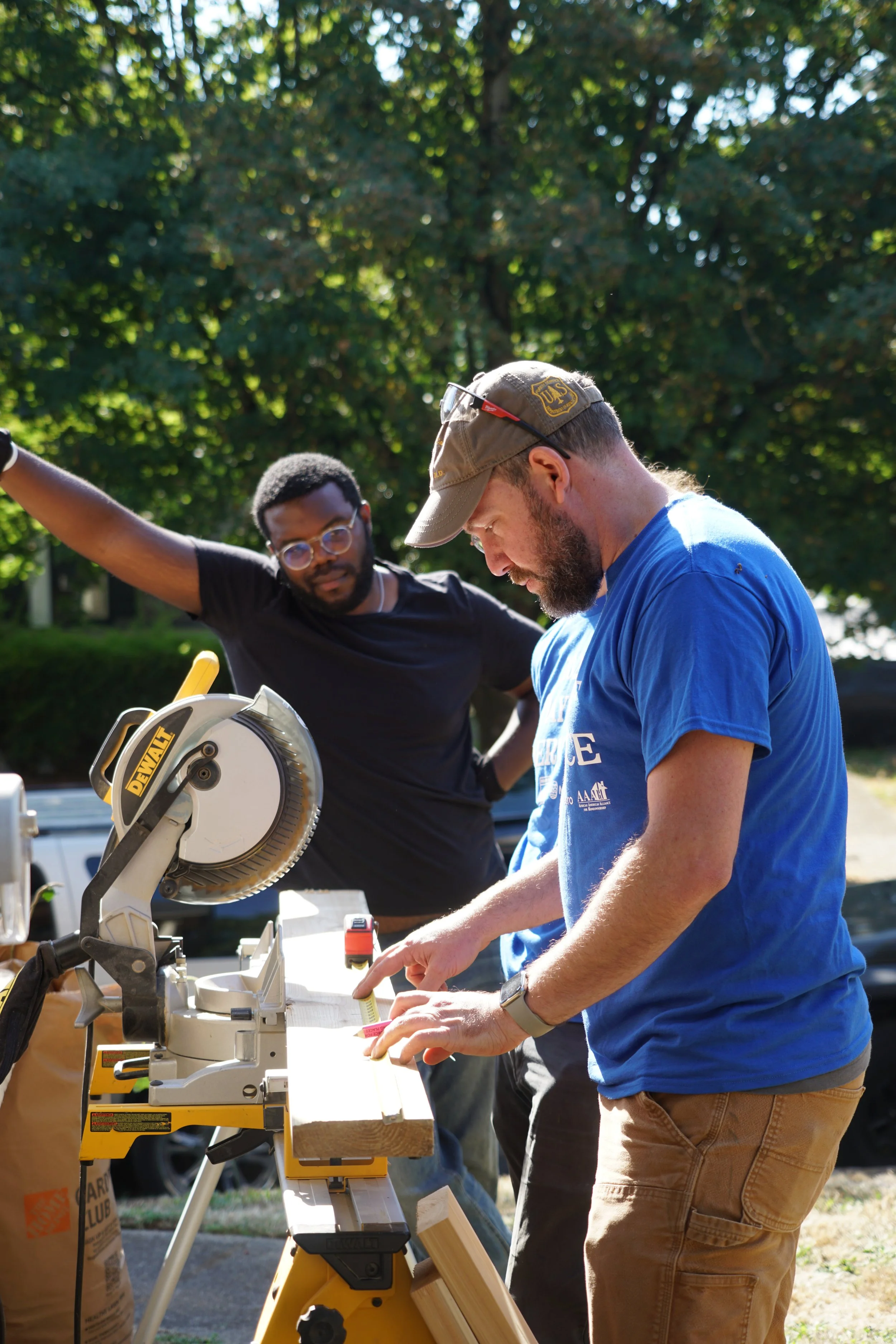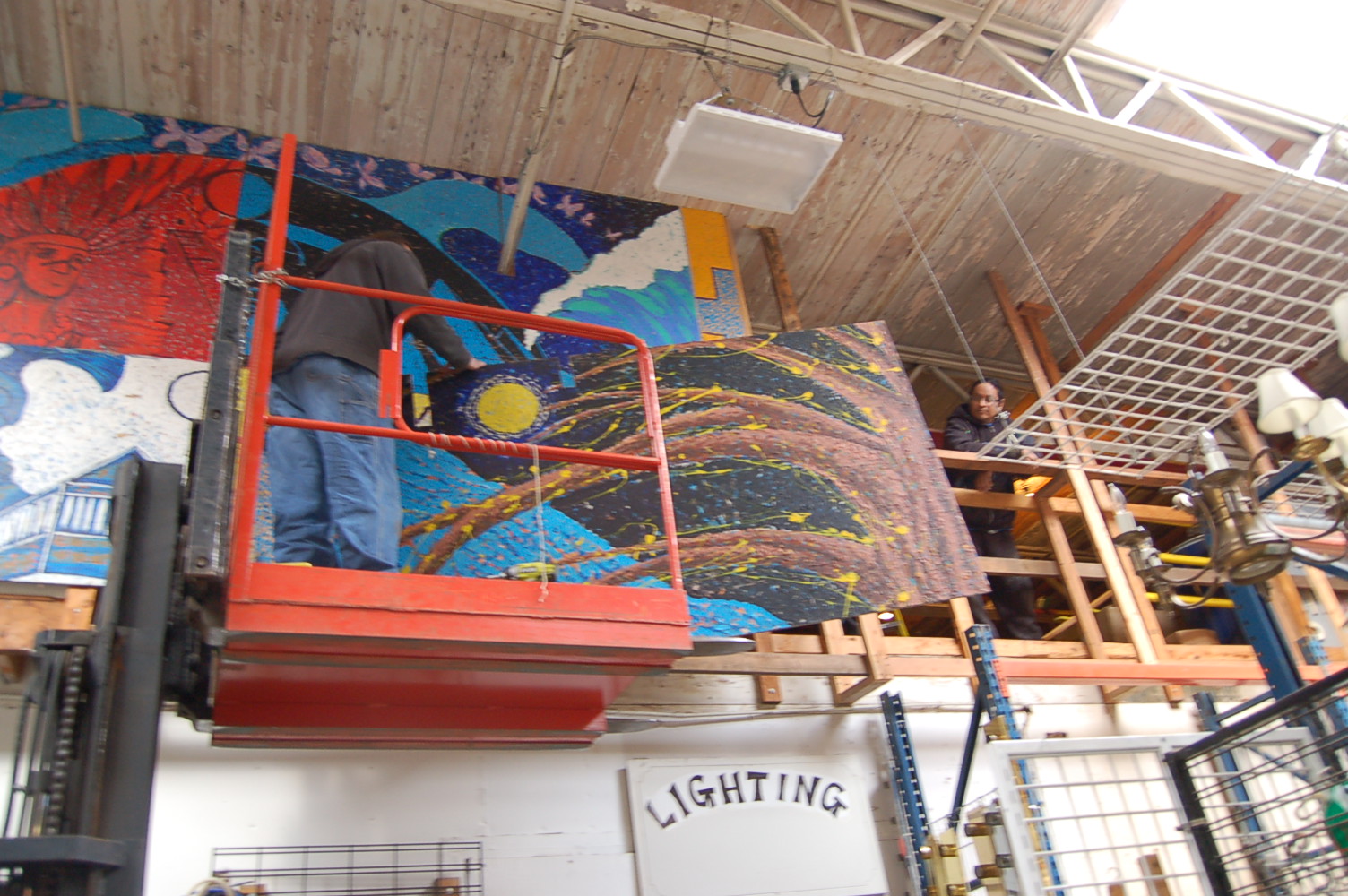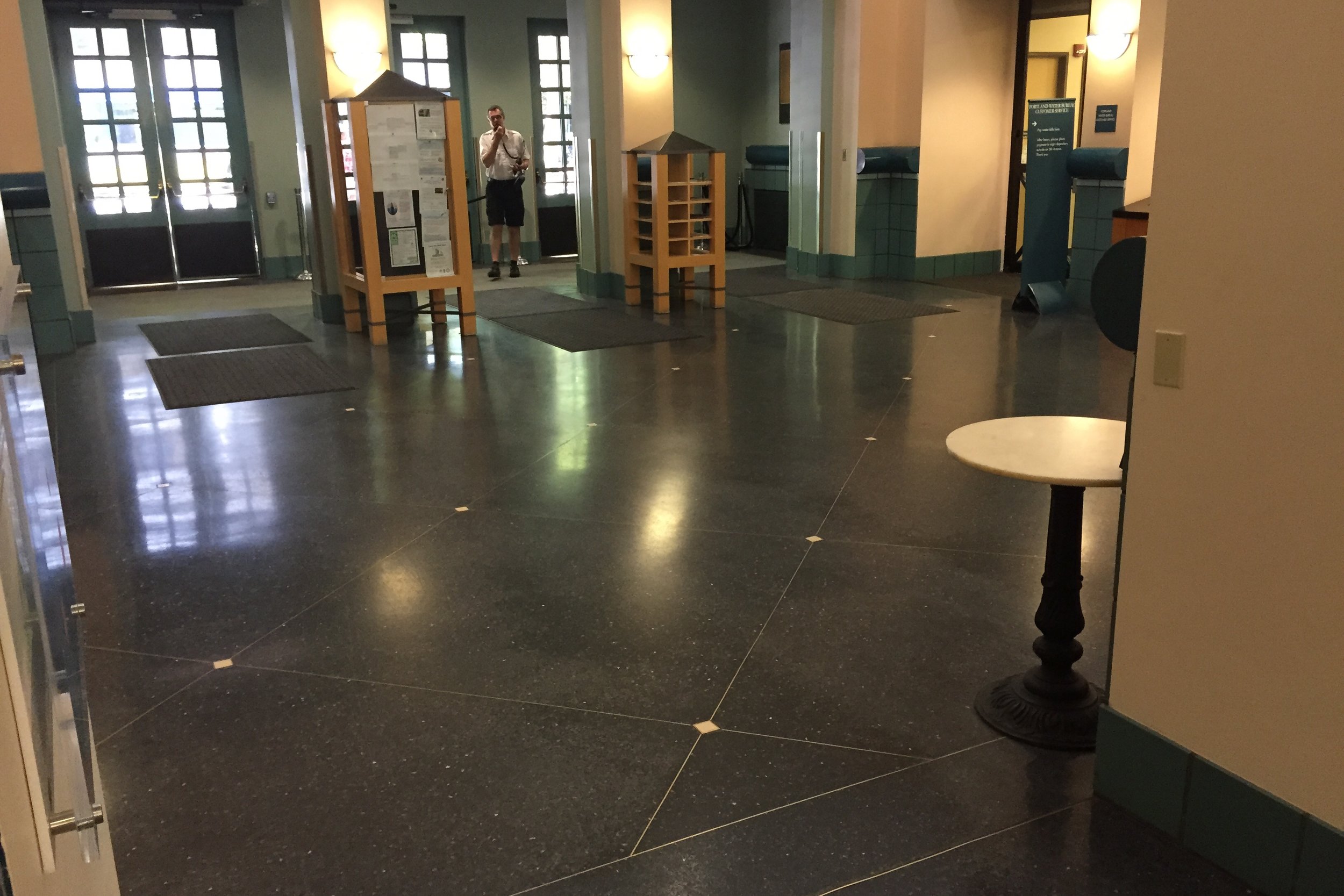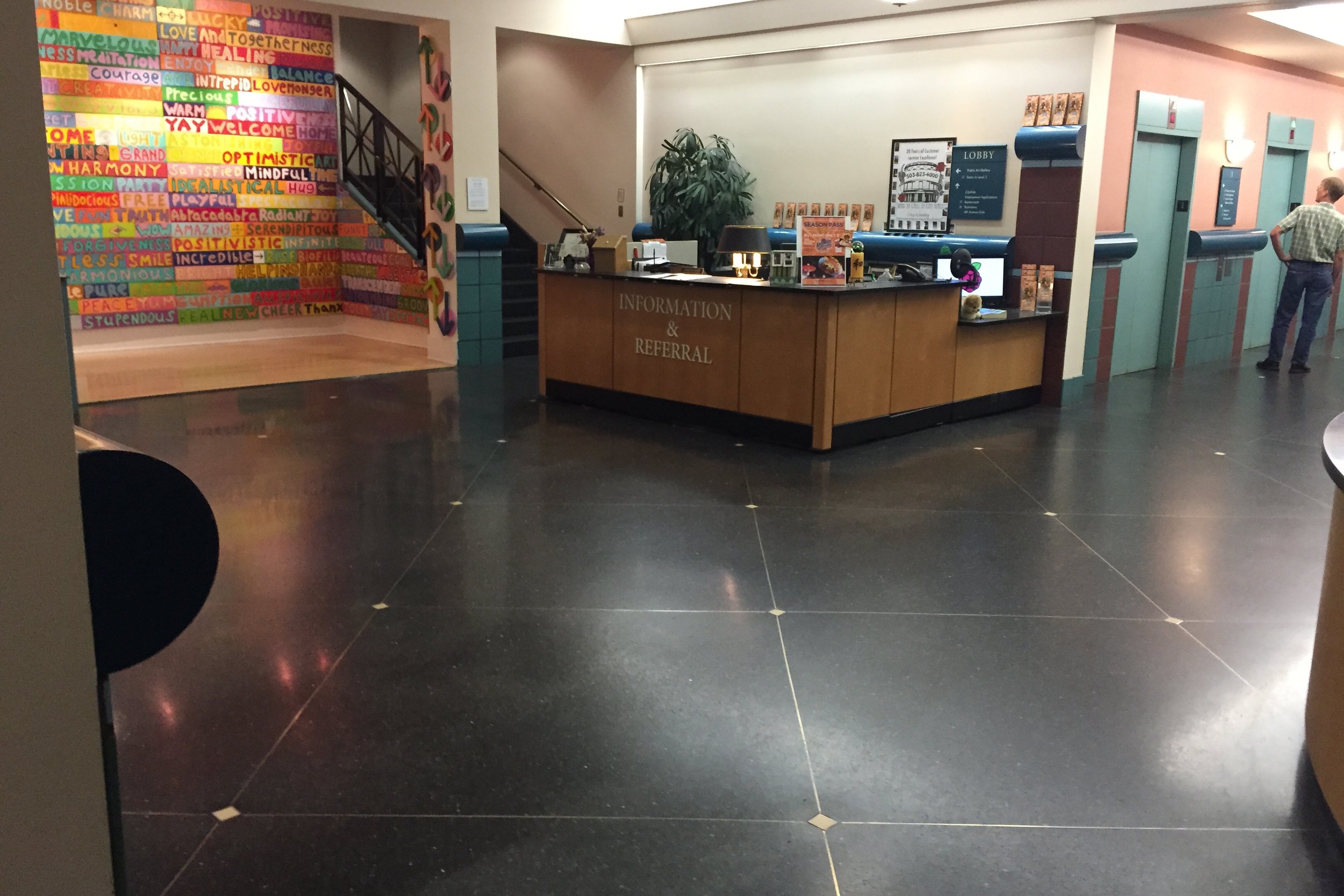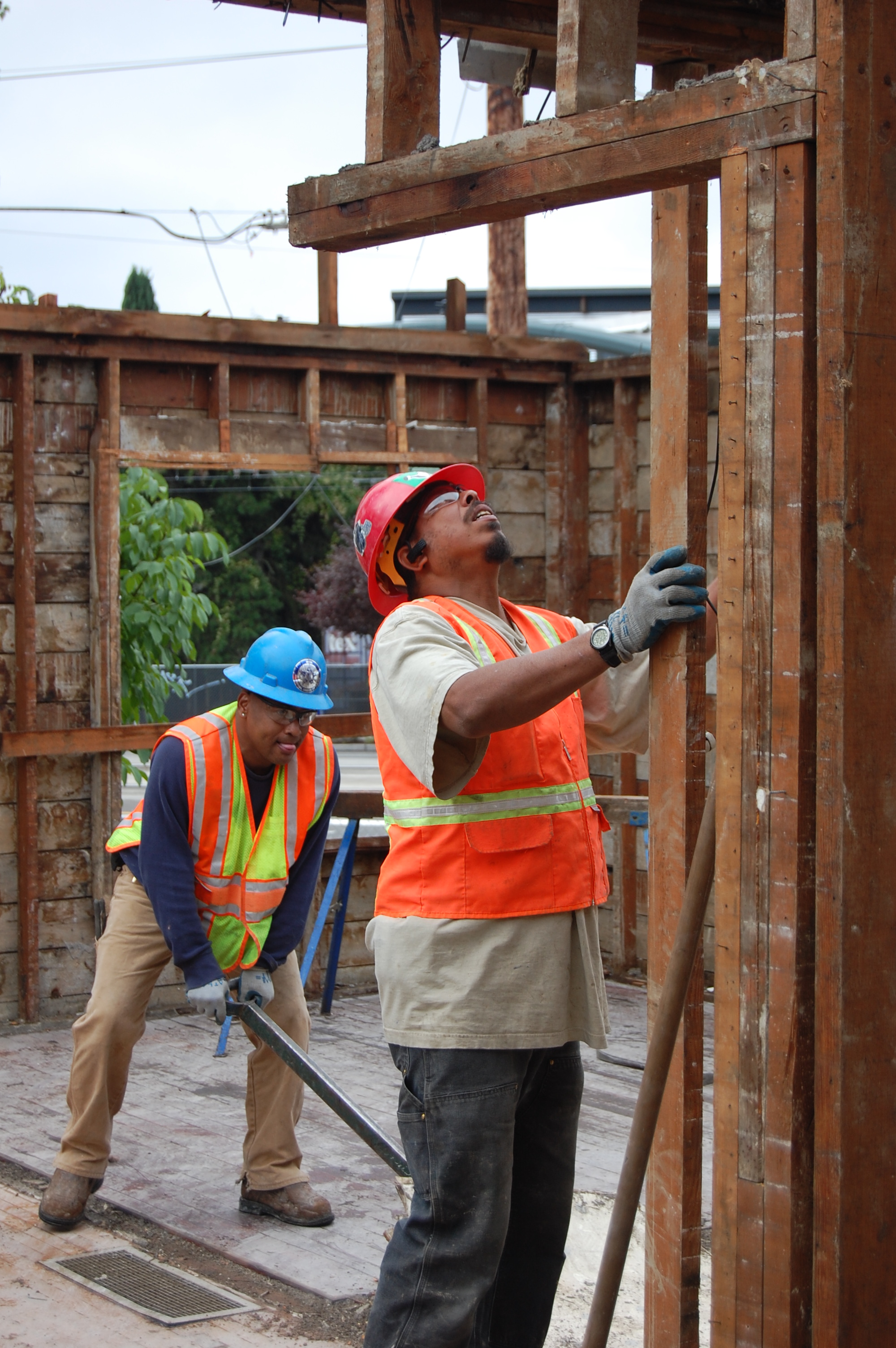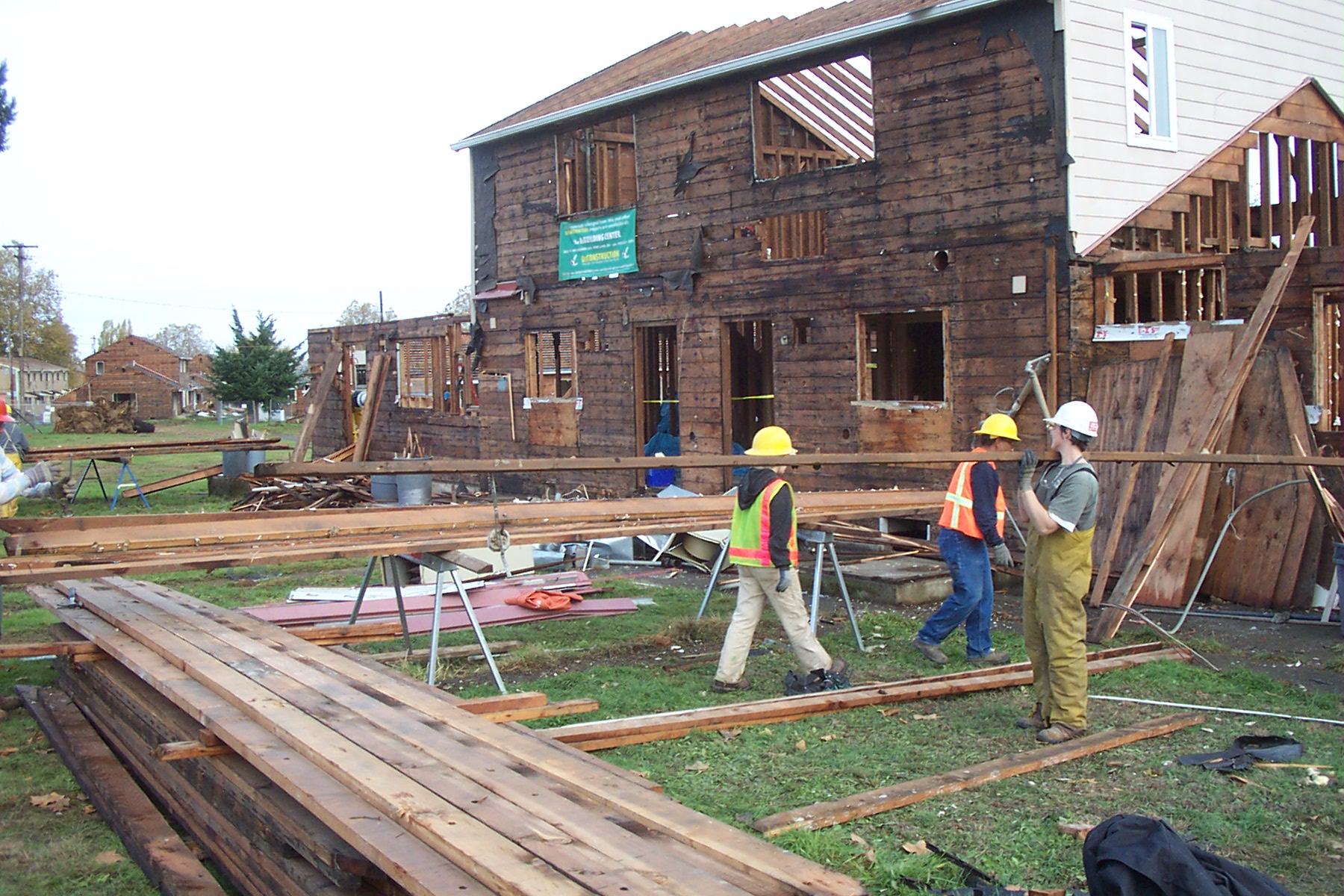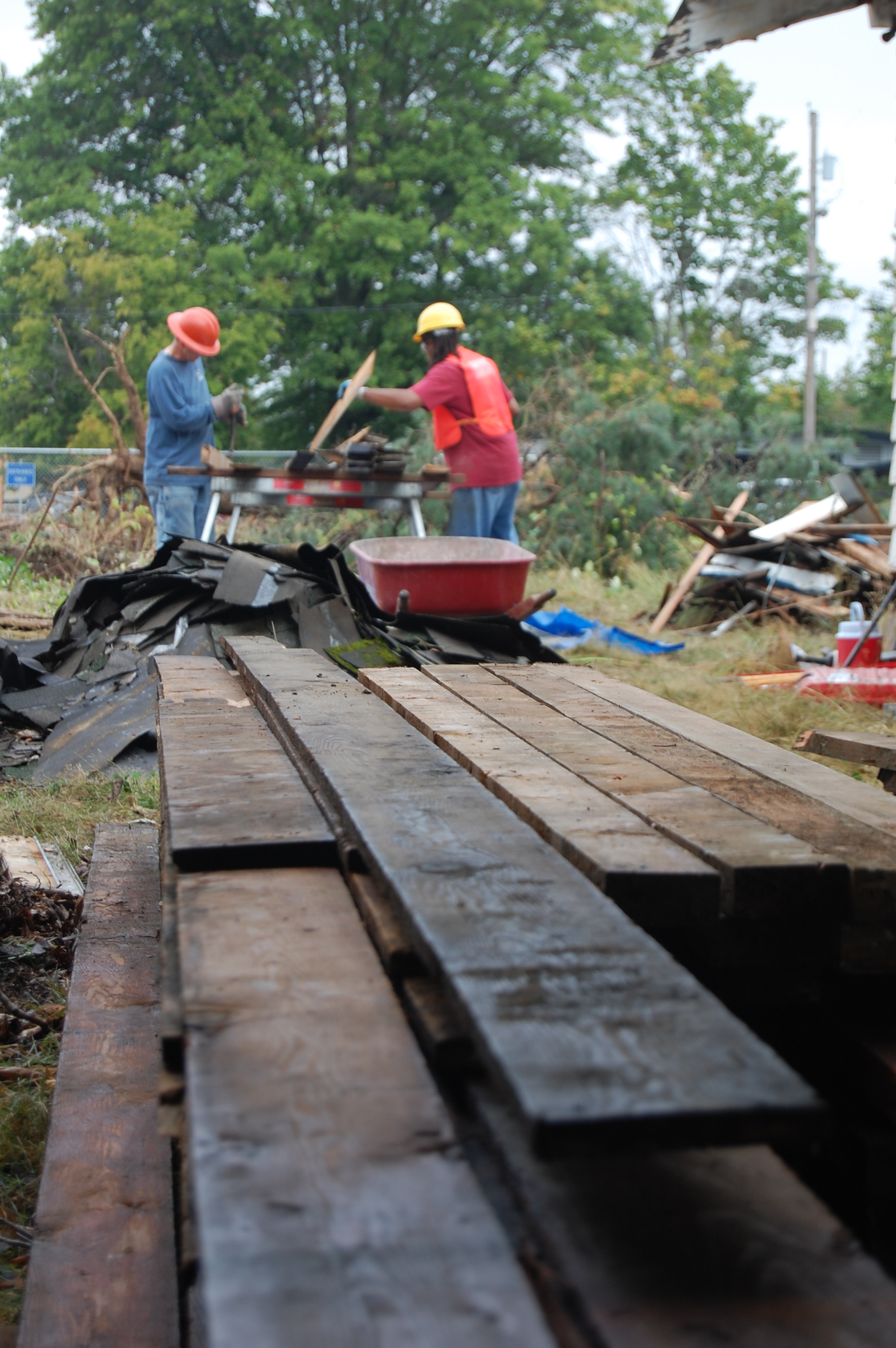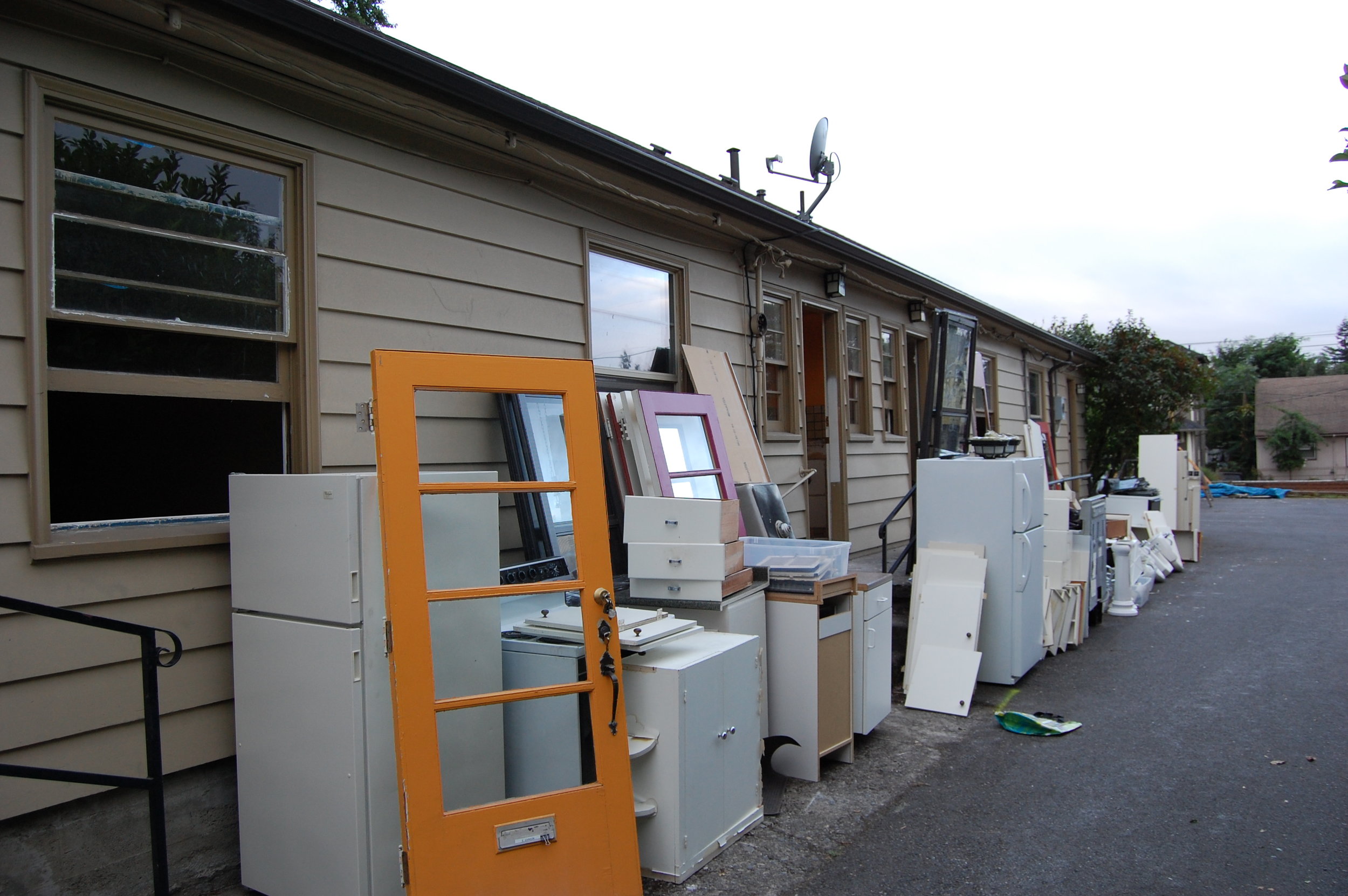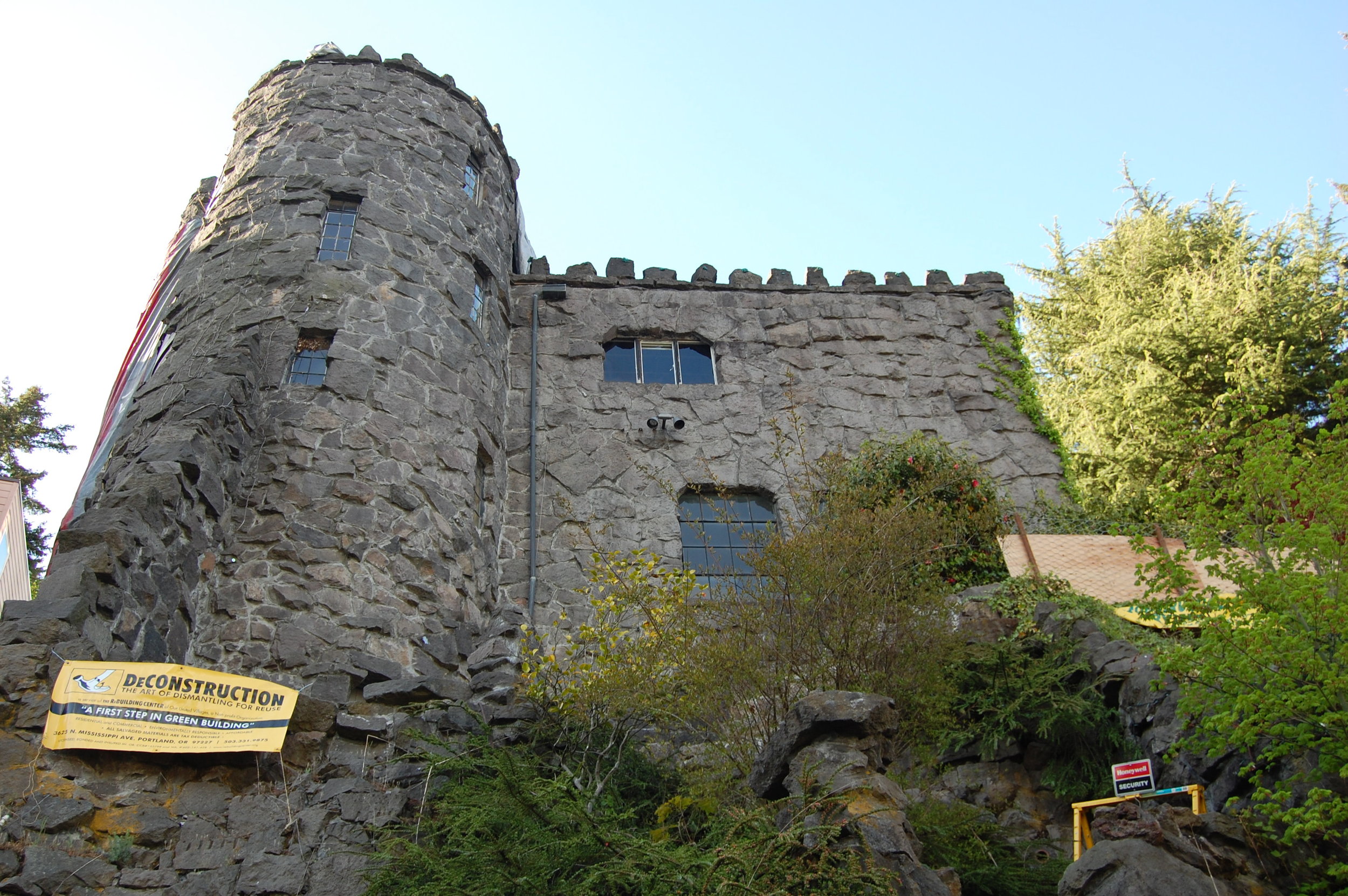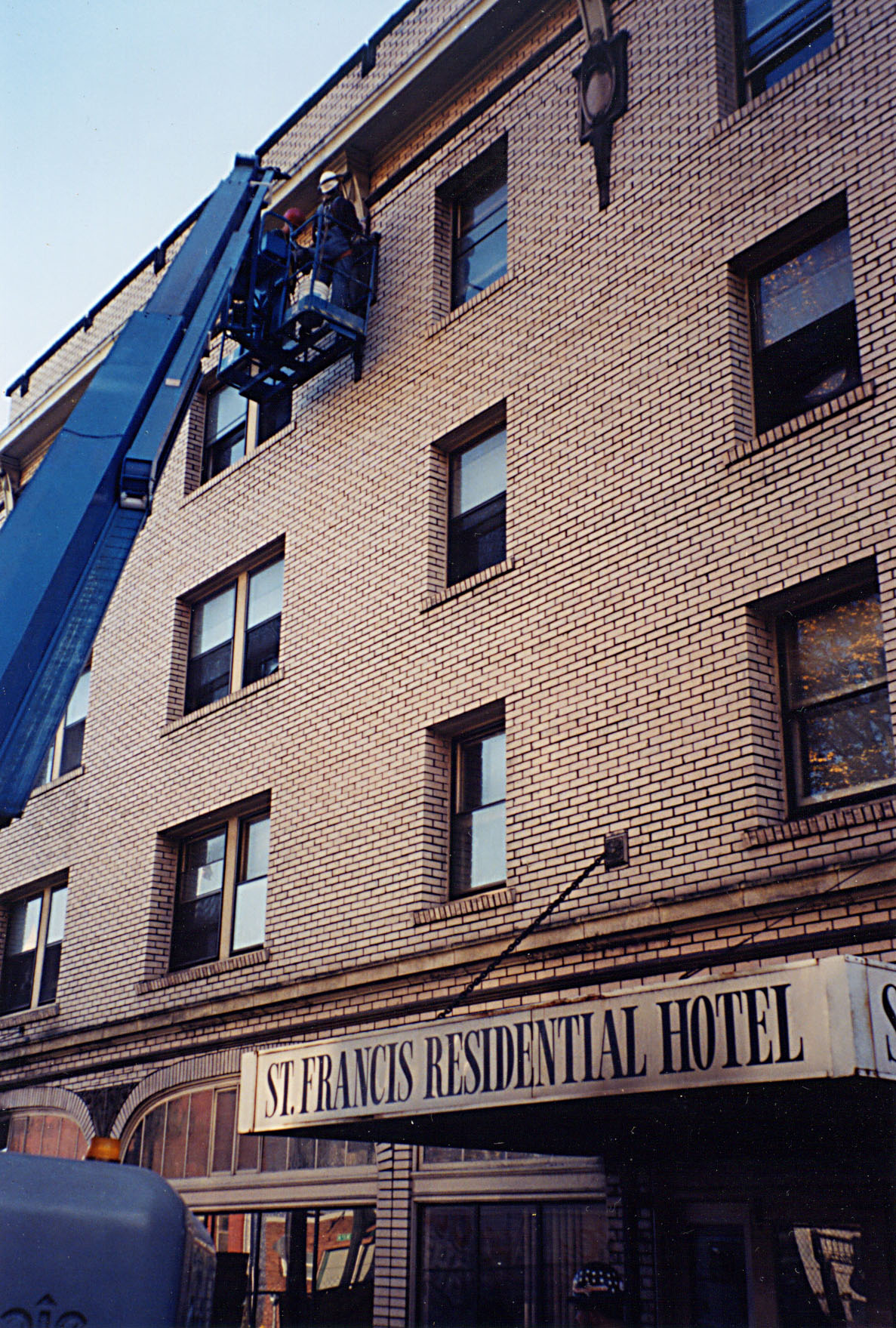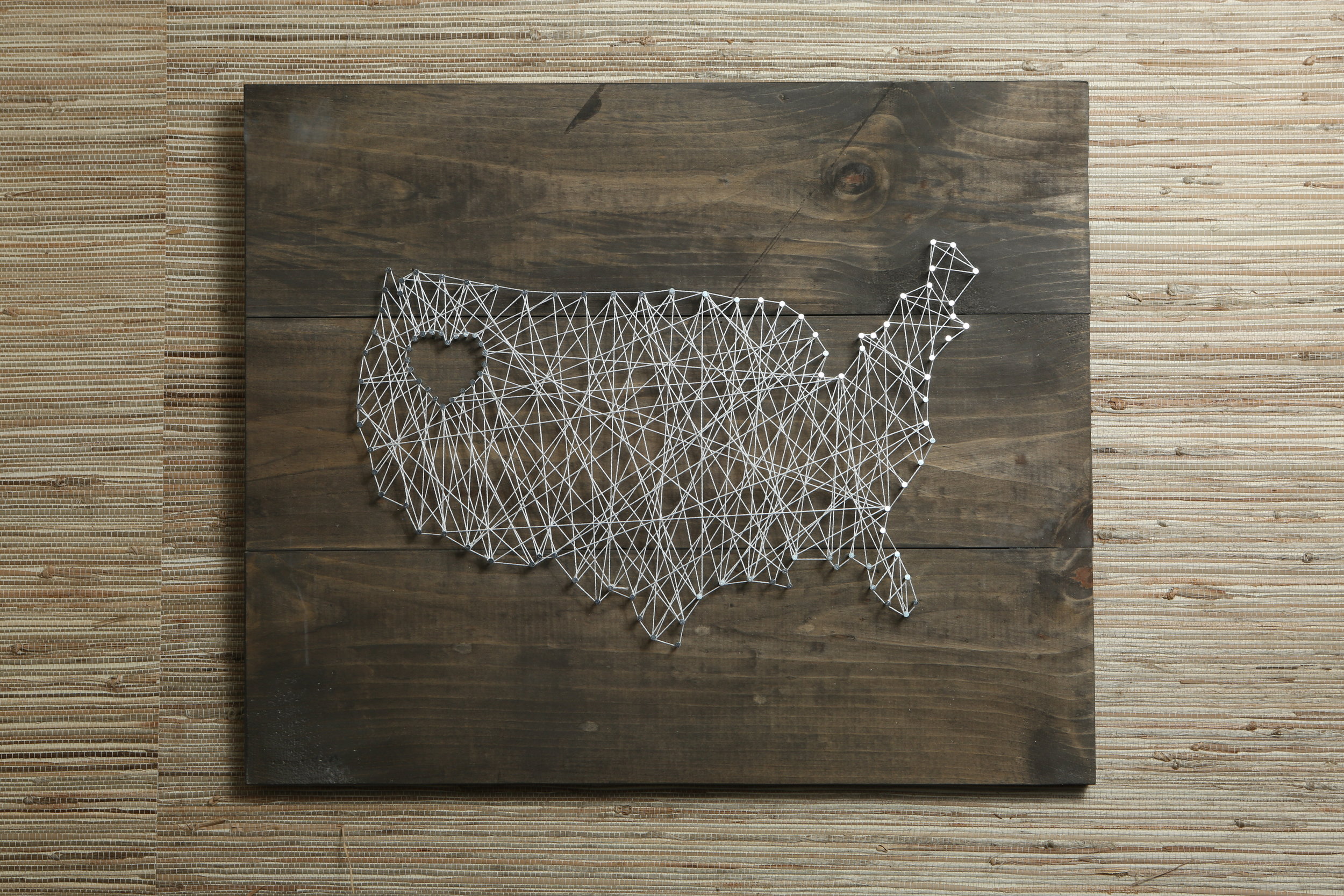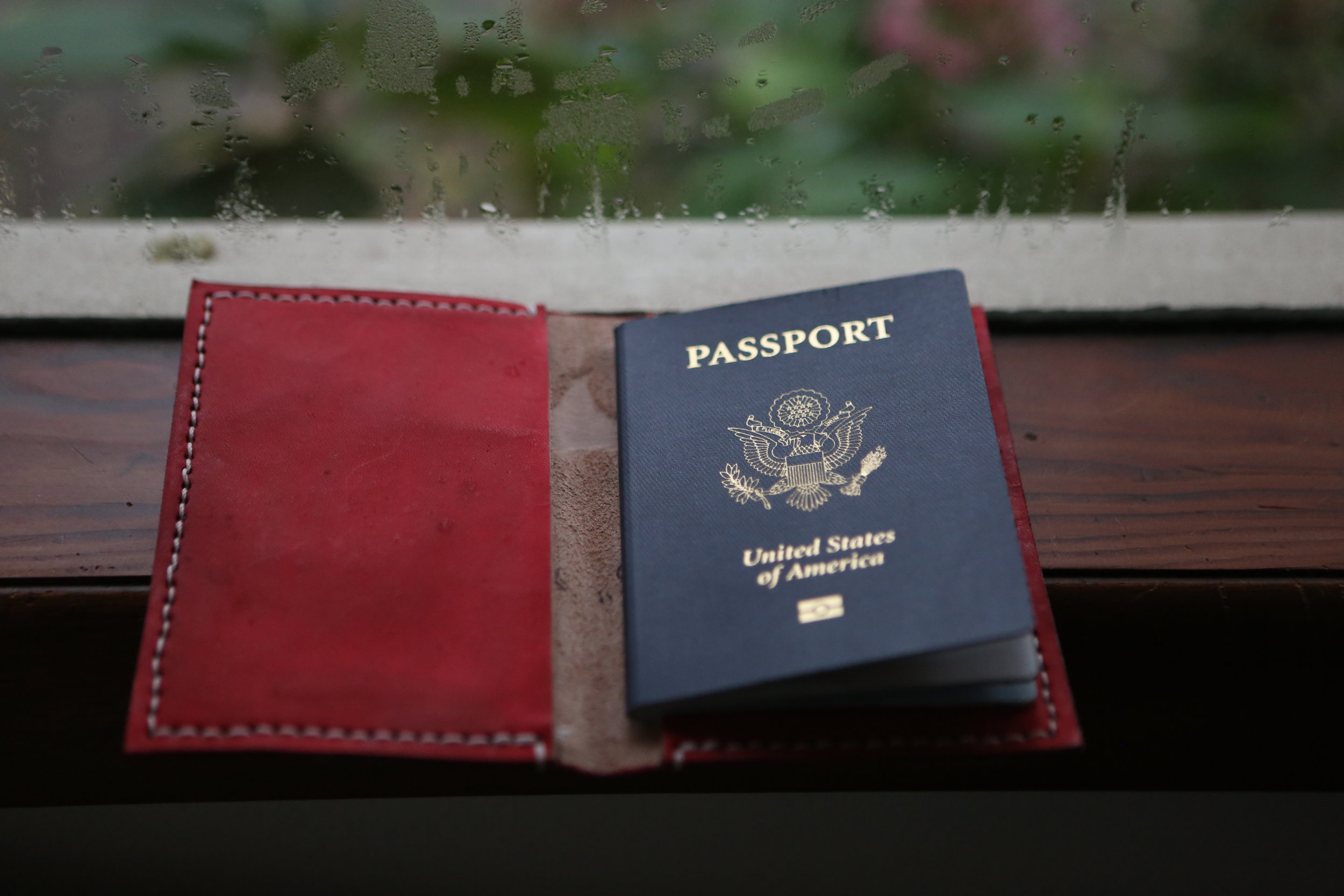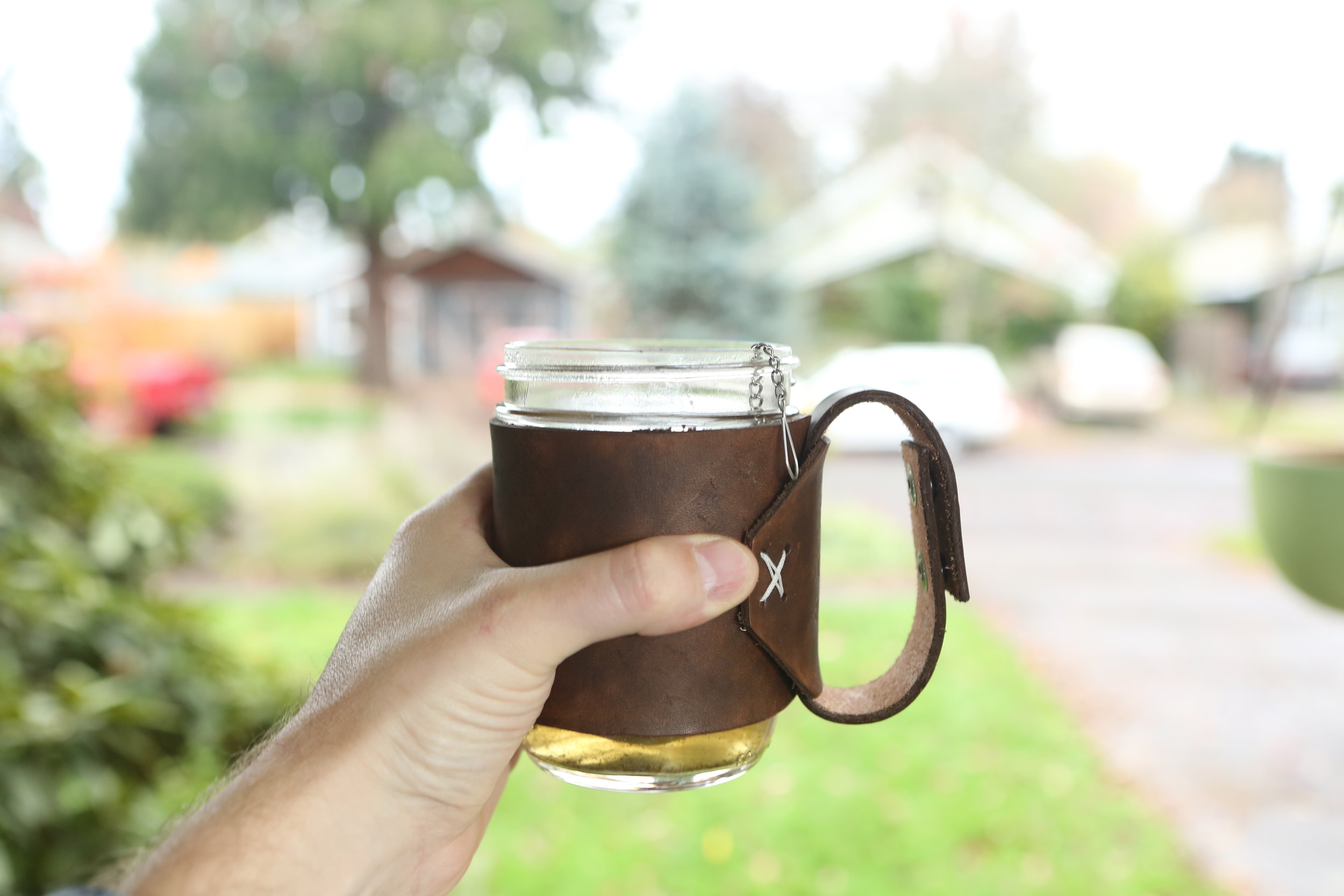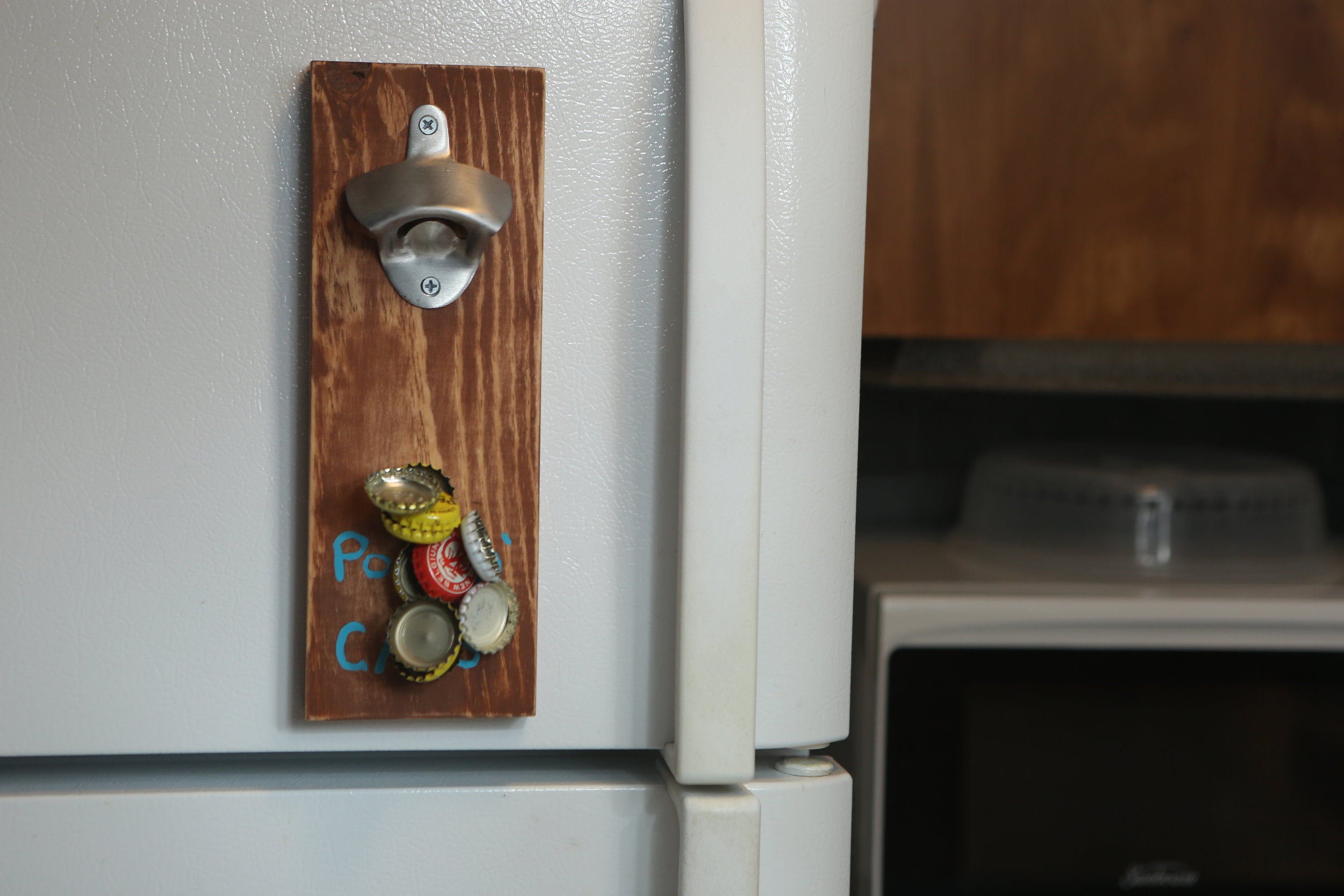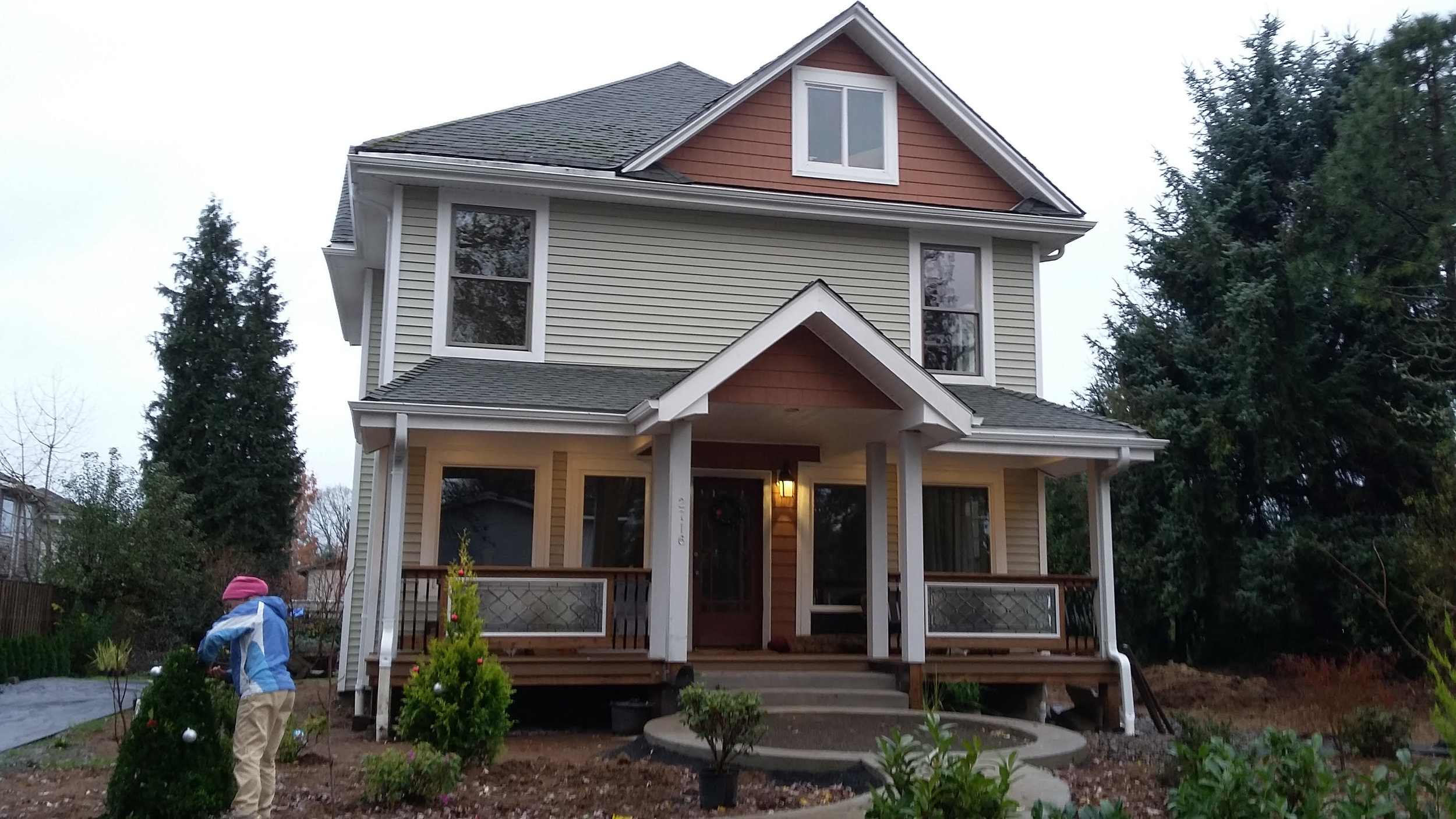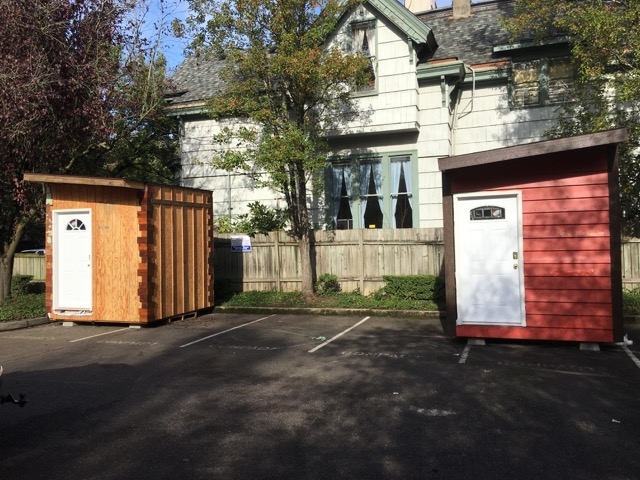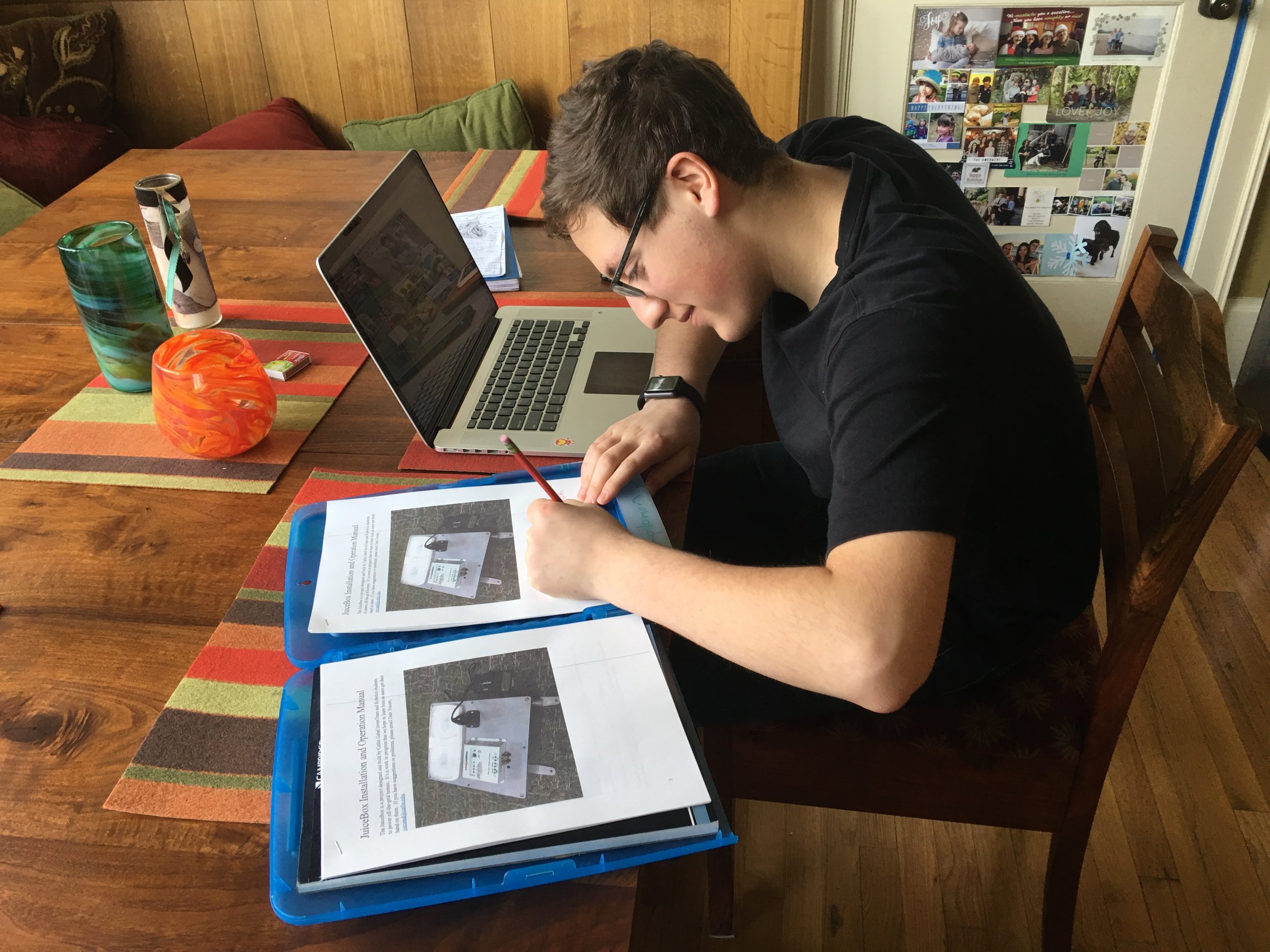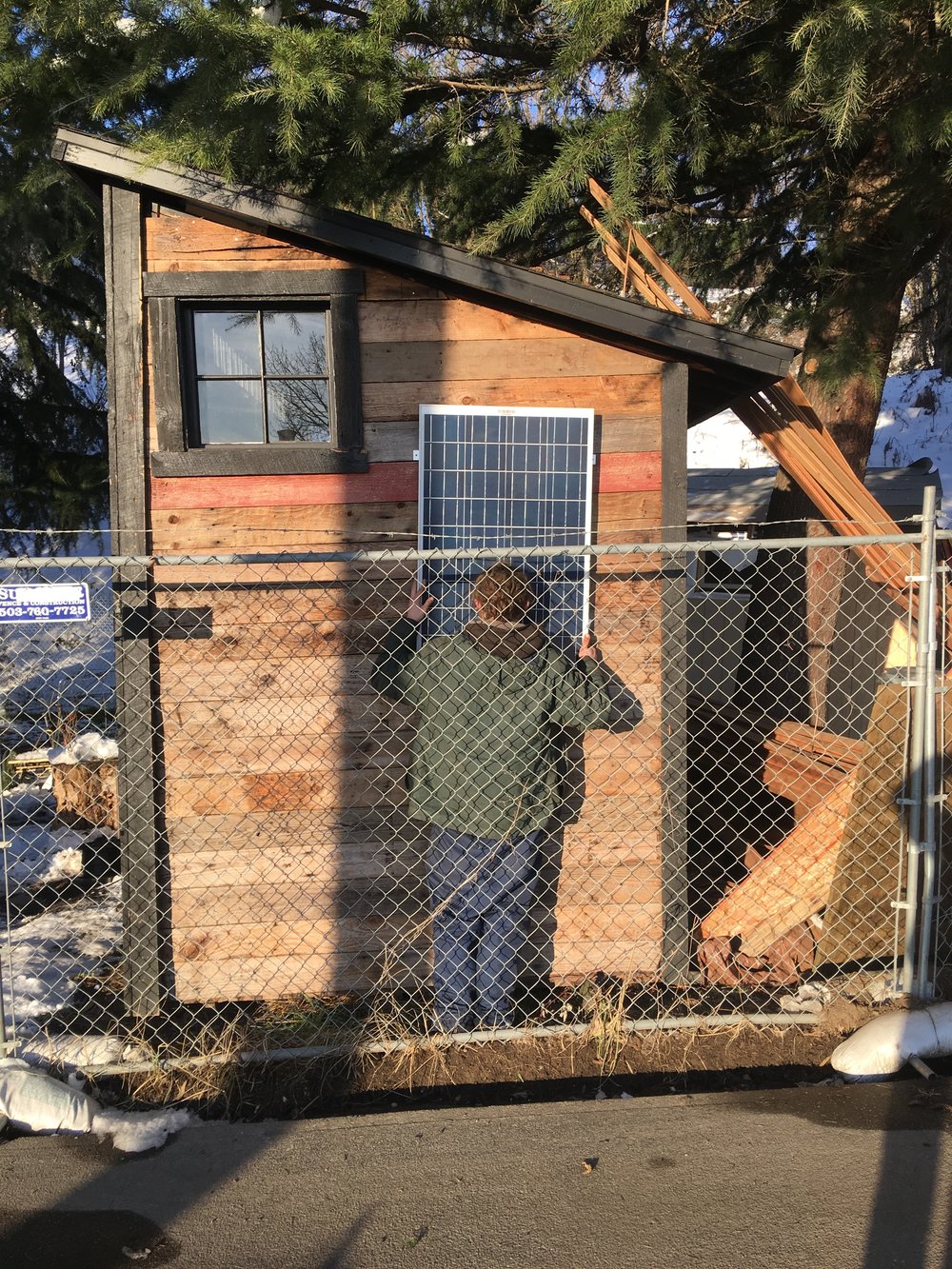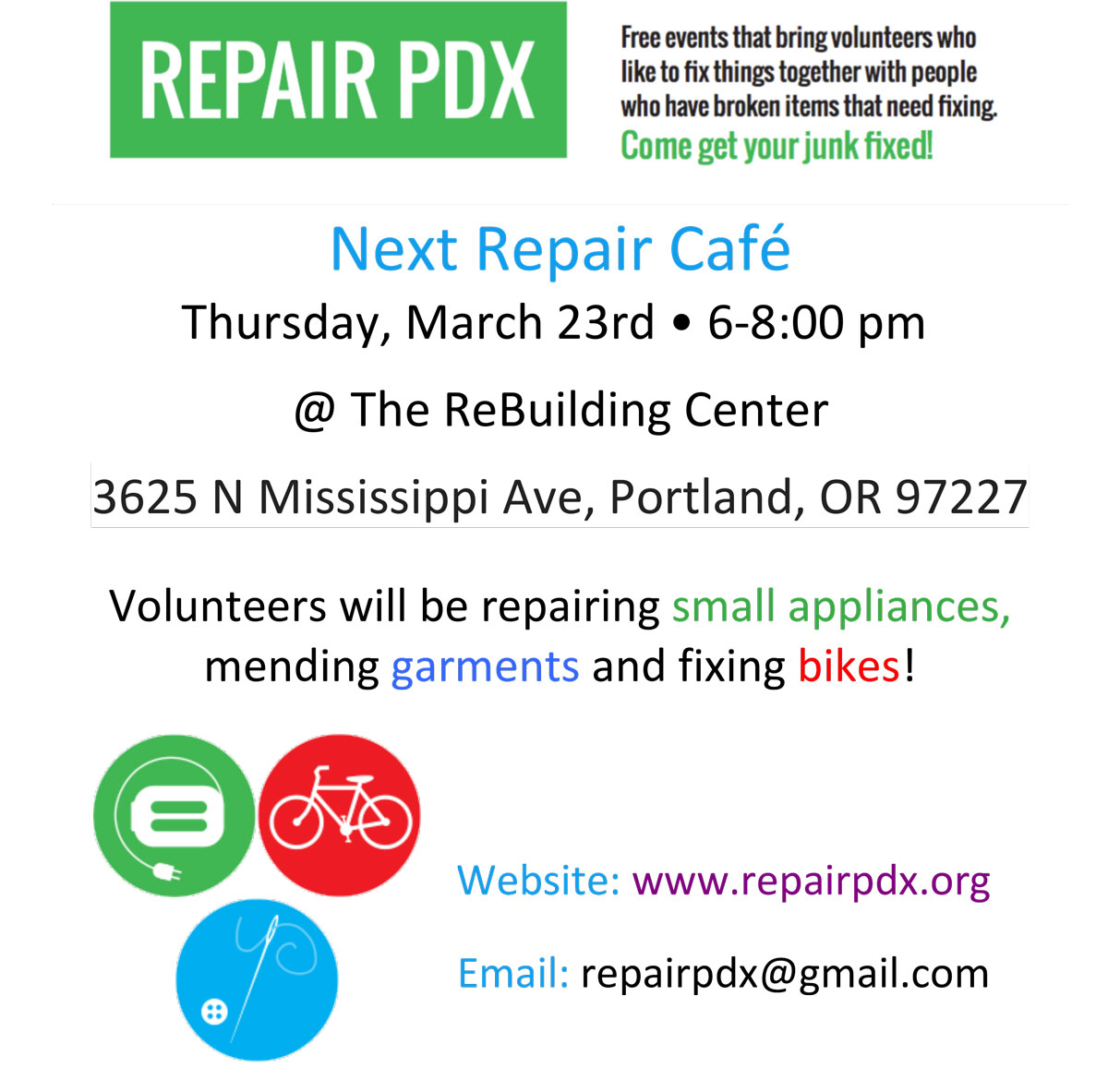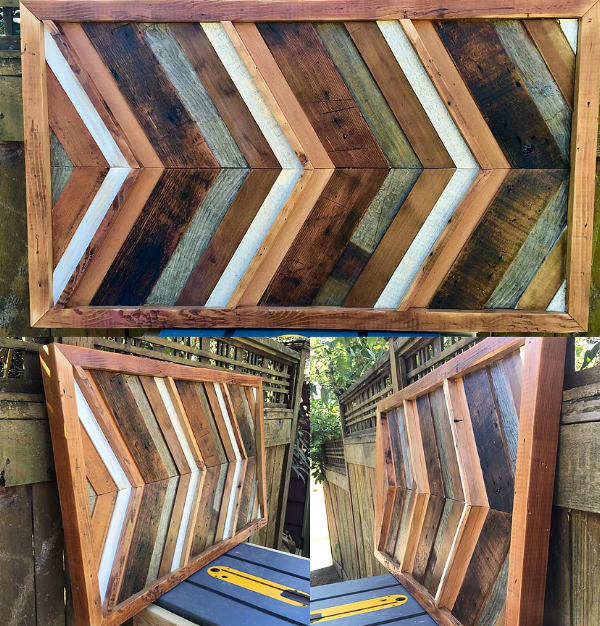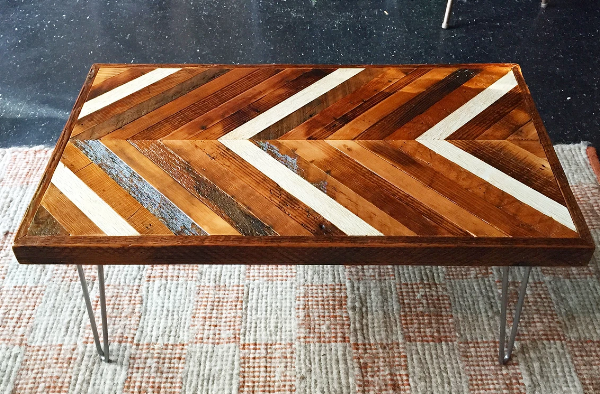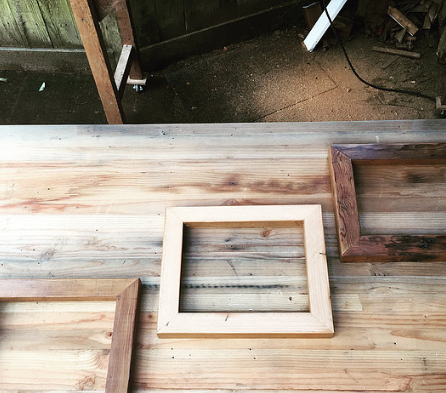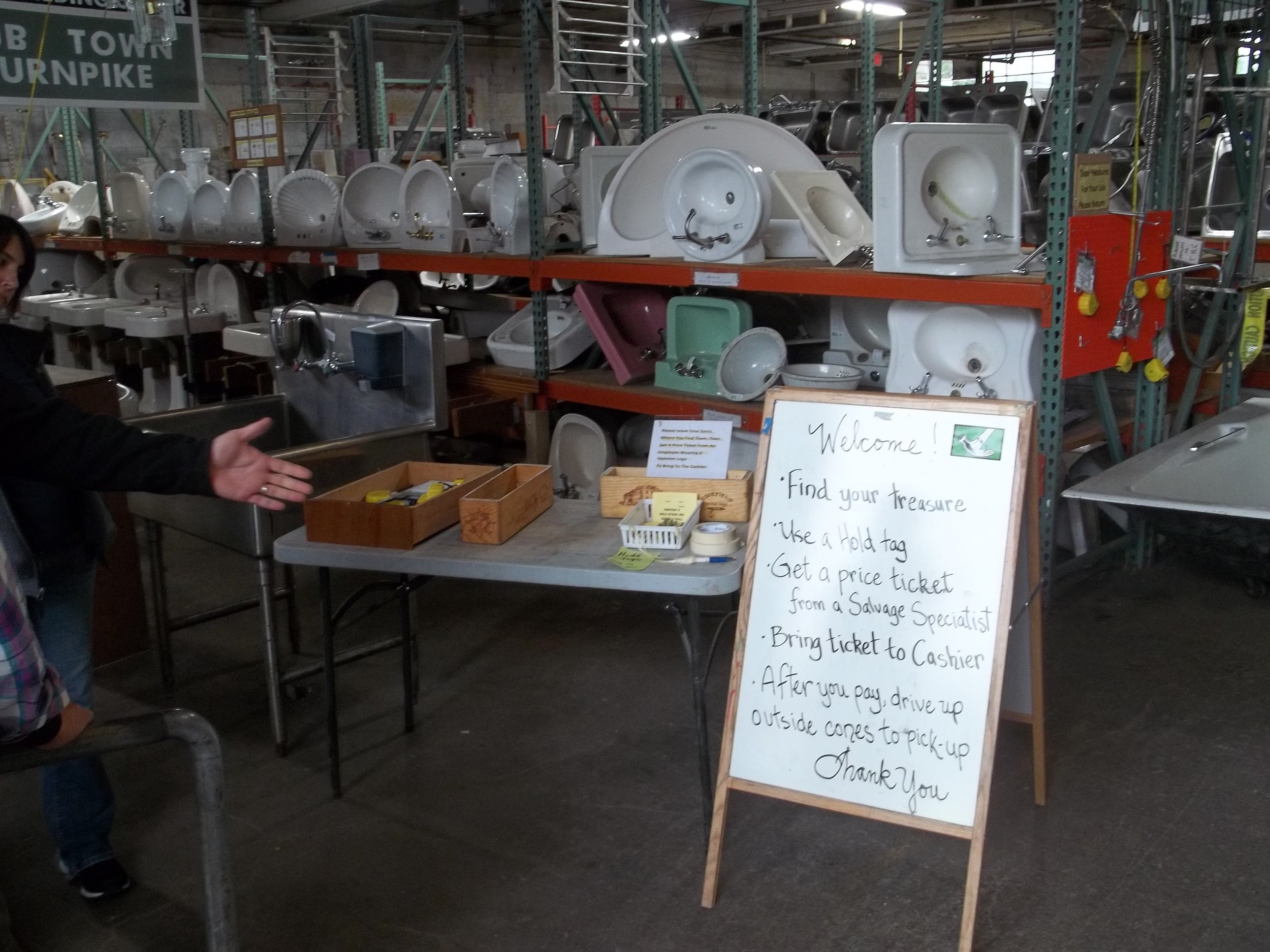The ReBuilding Center is excited to have just adopted a very special work of art by local Native American muralist, Rodolfo Serna. The 9' by 32' mural, designed and constructed by Rodolfo and the youth from Christie Care and P:ear, once graced the wall of the Por Que No? restaurant on Hawthorne and now takes on new life hanging proudly above the lighting section of the ReBuilding Center. Rodolfo was happy to do an interview with a member of our newsletter team and share his appreciation along with some more information about his art and role in the community.
What is your favorite part about making murals and why did you choose this as your primary artistic focus?
I love the collaboration process and community aspect. These large scale projects that I do with large groups of kids are very special to me and are greatly tied to my spirituality. I had done some individual art projects with kids and realized that I wanted to be able to work with lots of kids at same time. We learn and grow so much through this process, and everyone gets to take ownership of the piece. We do every step of the work together, and when it's done we all celebrate together.
How do you design your murals, and create space for everyone to express their ideas? What are the challenges and benefits of working collaboratively like this?
In art school I met other muralists who treated this work as an independent practice. I found many artists to be very self-focused and this didn't appeal to me. I was inspired by the way in which Mexican artists had historically used murals to bring community together. I decided I was going to practice incorporating elements of my Native American philosophy: respect, humility, and compassion. When you look at the temples in Mexico, these were never created by one individual, but massive amounts of people. Tears of the pyramids were even created by successive generations. I brought all those ideas into it. I let go of a lot of what I was taught in school: to be in full control of the piece. When you let go of control, you learn to trust your community and kids. What we have created together is always something far greater than what I could create myself. They come up with the ideas. I draw the composition, the blueprint. When they approve it, we then transfer it using the grid method - so they also learn about how to construct large scale art with this method. Once it is transposed, we begin the first layer of the painting. There are many layers of painting that we all do together, and these layers are very important.
Who painted the mural now at the ReBuilding Center, and what can you tell us about the symbolism of the imagery?
Two groups of kids worked on this, Christie Care [a residential youth village] and P:ear [a homeless youth mentoring program]. The kids at Christie Care wanted to represent the relationship between us and nature, and P:ear wanted to represent diversity. I often use images that reference Native tribes, like the Lacota or Aztec, and philosophy of the Native community. Here I used the imagery of the four directions: there are two lines, a circle, and four colors. These represent our relationship. The four colors are the four continents. The circle is really significant in symbolizing that we are all relatives and all related. The idea of this medicine wheel is widespread in Native philosophy and it is very important. The female figures in the mural are strong, and from different cultural backgrounds. The turtle represents Turtle Island, another name for America. There are representations of the four elements: wind, fire water, and earth. The side panels are more about the relationship between us and the earth - a symbiotic relationship represented by the humming bird and flower and traditional dancer in the tree.
What is the original story behind why this mural was created, and why is it now at the ReBuilding Center?
I made this mural about six years ago because of an invitation I received from the Por Que No? restaurant on Hawthorne. The neighborhood association and owner of the restaurant, Bryan Steelman, invited me to do it and I put the project together with the owner who wanted to bring more art to his restaurant. I got a grant for the public art that was only good for five years, and space beside the restaurant was then rented the mural was blocked by carts. The owner took it down. Stephen [the Executive Director at the ReBuilding Center] agreed to store it, and then decided to put it up.
What would you like people to take away from your art?
For me, it's really important to tip the scales for everyday people. We don't have as much power to change the world as we would like to. I make beautiful imagery and art. I'm trying to tip the scales with what I do and add some goodness to the world. Give to the life giving forces. Share my art with kids. Make the world beautiful. Not only because it is aesthetically pleasing, but because it is part of my spiritual practice and I really believe it has an effect. I believe color and imagery help stimulate the brain and this affects our health as human beings. It activates the brain and makes us think. I'm doing what I can with this medicine that is in me. My art is my medicine.
How does this piece resonate with the ReBuilding Center's mission of improving community through reuse?
When the mural was taken down, I was about to say goodbye to it. I had nowhere to store it, but there was still so much life in it. There is so much value in these things that are going to be thrown away. Instead of being thrown away, it is getting used a second time and gets to keep living. The ideas of harmony and working with the earth that are symbolized in this piece is exactly what the ReBuilding Center does. Reusing rather than wasting is part of the message behind the mural.
Can you tell us a little about your work with Latino Network and local youth?
Latino Network is a nonprofit where I work with at risk youth. I work with a lot of immigrant families, helping them to navigate services and housing support. I get referrals from the county for kids that are in the juvenile system. I work in the juvenile detention center, where I'm starting Red Stone Collective, a place where they can do art and participate in Native American practices such as dancing. This is going to become a nonprofit as well, and will become be a full cultural community center.
You've worked with an extensive array of nonprofits. Can you name some of the ones that you have worked with or share any stories from that work?
I work on the board of an Aztec dance group that does cultural presentations at schools and community events, and holds ceremonies several times a year that are open to the public. We just became a nonprofit and will be expanding. I'm on another board that also just got nonprofit status that does healing for people through Native sweat lodges. I'm really proud of those two groups, and that I get to be part of them and the amazing people that run them. My work at the detention center is also going to become a nonprofit, and I'm hoping it will become a community center, a safe place for all these kids to share art and culture and just stay safe.
Are you working on any new projects right now?
I've been invited to do a mural or two at the PDX airport, and I'm currently working with high schoolers on that. I've applied for some other things, but nothing certain just yet. I was just invited to the Clackamas Art Alliance. I've worked with four schools from there in the last year, which is great. I'm definitely growing.
How many murals have you created in the Portland area?
Over 30 now, I think.
Are you active or accessible to your fans through social media such as Facebook or Instagram?
Yes I have pages on those, and that's been the best way for the youth to keep in touch with me since I'm not always in the same place.
Anything else you would like to share?
I'm really grateful for the ReBuilding Center. When I saw my mural back up it was powerful and beautiful and it warmed my heart. I'm very pleased by this validation and affirmation of my work. The staff there is great and this has been a great experience.



